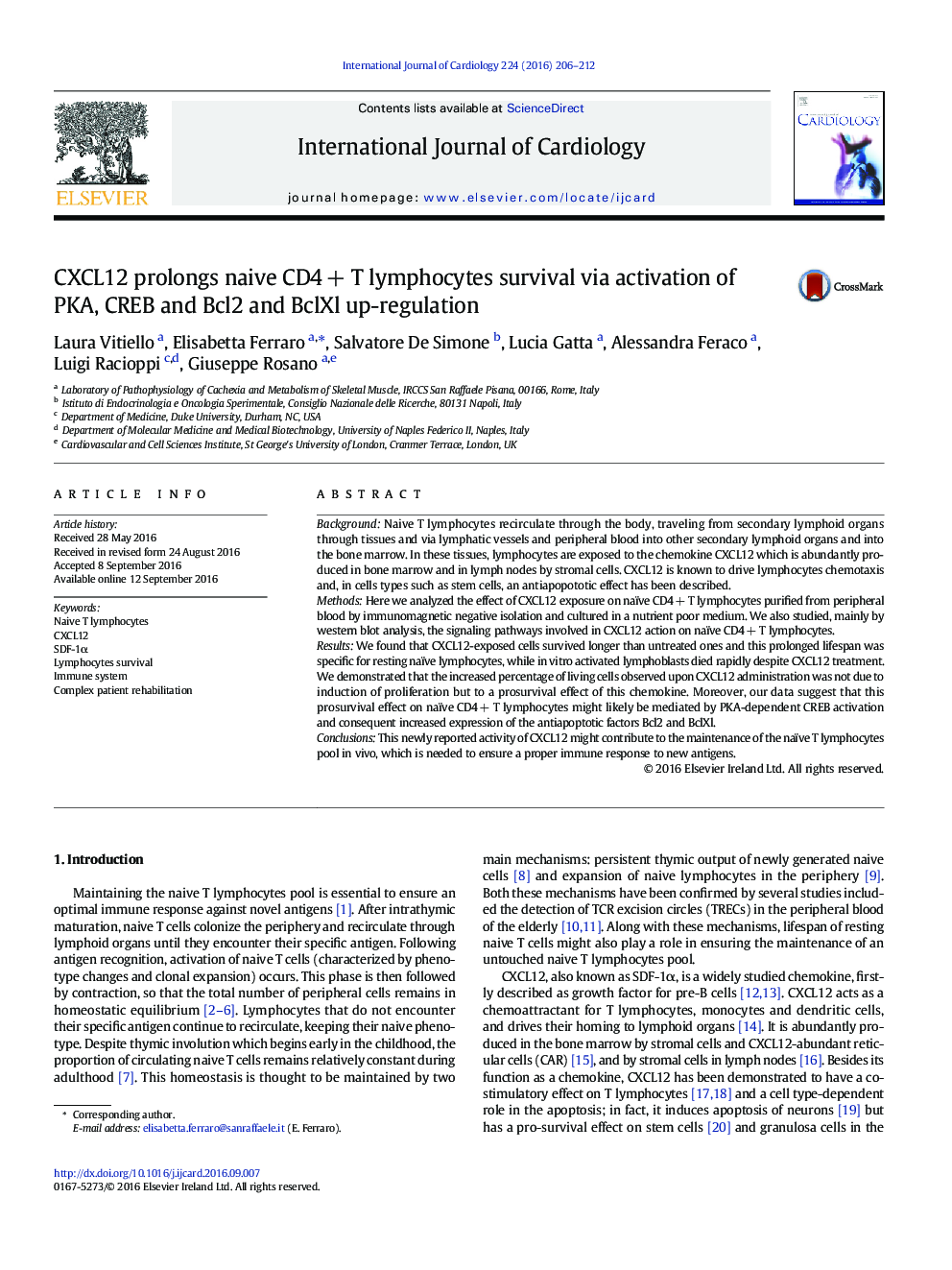| Article ID | Journal | Published Year | Pages | File Type |
|---|---|---|---|---|
| 5962388 | International Journal of Cardiology | 2016 | 7 Pages |
BackgroundNaive T lymphocytes recirculate through the body, traveling from secondary lymphoid organs through tissues and via lymphatic vessels and peripheral blood into other secondary lymphoid organs and into the bone marrow. In these tissues, lymphocytes are exposed to the chemokine CXCL12 which is abundantly produced in bone marrow and in lymph nodes by stromal cells. CXCL12 is known to drive lymphocytes chemotaxis and, in cells types such as stem cells, an antiapopototic effect has been described.MethodsHere we analyzed the effect of CXCL12 exposure on naïve CD4Â + T lymphocytes purified from peripheral blood by immunomagnetic negative isolation and cultured in a nutrient poor medium. We also studied, mainly by western blot analysis, the signaling pathways involved in CXCL12 action on naïve CD4Â + T lymphocytes.ResultsWe found that CXCL12-exposed cells survived longer than untreated ones and this prolonged lifespan was specific for resting naïve lymphocytes, while in vitro activated lymphoblasts died rapidly despite CXCL12 treatment. We demonstrated that the increased percentage of living cells observed upon CXCL12 administration was not due to induction of proliferation but to a prosurvival effect of this chemokine. Moreover, our data suggest that this prosurvival effect on naïve CD4Â + T lymphocytes might likely be mediated by PKA-dependent CREB activation and consequent increased expression of the antiapoptotic factors Bcl2 and BclXl.ConclusionsThis newly reported activity of CXCL12 might contribute to the maintenance of the naïve T lymphocytes pool in vivo, which is needed to ensure a proper immune response to new antigens.
